You are using an out of date browser. It may not display this or other websites correctly.
You should upgrade or use an alternative browser.
You should upgrade or use an alternative browser.
Turkey Military News, Reports, Data, etc.
- Thread starter Jeff Head
- Start date
It's 4 a.m. and I can't sleep so I might as well answer this.Dude ,you shouldn’t be happy about this, you should wish it’s not the actual design, it’s some flanker-era technology
Personally, I have mixed feelings about the latest design, tbh in one way I don't like it's design; but in another way, I like that It's now more unique other than just being a "Turkish F-22".
It now has design elements which remind me of the F-22, F-35 and the Su-57. I don't like the design, I think it looks ugly but at the same time I like the fact that It now looks more unique. For example I don't like that huge space between the engines on the new design.
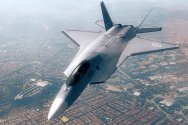
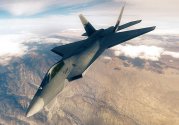
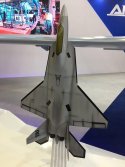
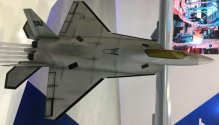
Aside from the cockpit section, I loved the old design. But due to some engineering reasonings that we may never know, the design was changed actually quite some time ago. People who don't follow Turkish aviation programs closely will be supised but there already have been news about this change a couple of years ago. And because this design is a couple years old, there recently have been talks around the defence industry watching community that this is not the finalised design but is a very analogous one.
Can you explain to me what makes this plane and its technologies "flanker-era"?
The Air Force requested essentially a stealthified F-15C/E due to the operational requirements and this plane literally is more like what a 5th gen Eagle would look like than an F-22 derivative.
One issue is that the internal bays were designed to carry 1000lb bombs just like the F-22, which is a problem imo.
By the way, what no one surprisingly is not talking about is that the earlier design was 21 meters long but the last design is 19 meters and is more wide due to that humongous space between engines.
I heard that the Su-57 can't fire missiles from forward and rear weapon bays at the same time, is that right? Can anyone confirm this? If so, I think this may be an issue.
But then, the Americans wouldn't put the same style bays in the Yf-23 when it was competing for such a critical program, would they?
It's 4 a.m. and I can't sleep so I might as well answer this.
Personally, I have mixed feelings about the latest design, tbh in one way I don't like it's design; but in another way, I like that It's now more unique other than just being a "Turkish F-22".
It now has design elements which remind me of the F-22, F-35 and the Su-57. I don't like the design, I think it looks ugly but at the same time I like the fact that It now looks more unique. For example I don't like that huge space between the engines on the new design.
View attachment 82832View attachment 82833View attachment 82834View attachment 82835
Aside from the cockpit section, I loved the old design. But due to some engineering reasonings that we may never know, the design was changed actually quite some time ago. People who don't follow Turkish aviation programs closely will be supised but there already have been news about this change a couple of years ago. And because this design is a couple years old, there recently have been talks around the defence industry watching community that this is not the finalised design but is a very analogous one.
Can you explain to me what makes this plane and its technologies "flanker-era"?
The Air Force requested essentially a stealthified F-15C/E due to the operational requirements and this plane literally is more like what a 5th gen Eagle would look like than an F-22 derivative.
One issue is that the internal bays were designed to carry 1000lb bombs just like the F-22, which is a problem imo.
By the way, what no one surprisingly is not talking about is that the earlier design was 21 meters long but the last design is 19 meters and is more wide due to that humongous space between engines.
I heard that the Su-57 can't fire missiles from forward and rear weapon bays at the same time, is that right? Can anyone confirm this? If so, I think this may be an issue.
But then, the Americans wouldn't put the same style bays in the Yf-23 when it was competing for such a critical program, would they?
Just out of curiosity what do you find ugly about the new design compared with the old one? Do you dislike the addition of LERX?
Nah, that's not it, TF-X always had LERX and is even more visible on the old design I shared in my last reply. I think the Su-57-like design elements, mainly the S-duct and the wide space and internal stations between the engines made it uglier. After saying this, I'm probably going to be excommunicated by avgeeks but I find the Su-57 to be ugly looking.Just out of curiosity what do you find ugly about the new design compared with the old one? Do you dislike the addition of LERX?
It was far more attractive looking like an F-22.
Nah, that's not it, TF-X always had LERX and is even more visible on the old design I shared in my last reply. I think the Su-57-like design elements, mainly the S-duct and the wide space and internal stations between the engines made it uglier. After saying this, I'm probably going to be excommunicated by avgeeks but I find the Su-57 to be ugly looking.
It was far more attractive looking like an F-22.
Wider spacing improves body lift though. It improves turning at possible detriment to roll rate. Personally I find the differences from F-22 refreshing.
Yeah, me too; as I said it now looks more unique; like a mixture of 22, 35 and Su-57. Which appeals to me. Most 5th gen fighters look indistinguishably almost the same, except the main big 4 F-22, F-35, J-20 and Su-57. Even then J-20 looks like it's American counterparts from the frontal profile. Others like the AMCA, J-XY and KF-21 also really look like the F-35 but with their main differences being double engines. In this circumstances, TF-X having a more fresh and more unique design is surely always a nice thing.Wider spacing improves body lift though. It improves turning at possible detriment to roll rate. Personally I find the differences from F-22 refreshing.
But still, the old design looked better and I think most people would agree on this.
The advantages you said are there, but we were talking about the attractiveness of both designs.
What made you think that?
It should be made one piece instead of two, Russians do this cause Su-57 is a central body lifting aircraft like other flankers, it was once a four piece frame (each ring welded by 2 pieces)
And in this pic , I think this frame is at the end of the bay, which takes a serious amount of force , other 5gens tend to use integral frame at this place ( except Su-57)
It’s not about the whole aircraft ,but the first pic .Sorry my language dear stranger but...
View attachment 82830
What made you come up with that? If you give me your reasonings, I might try to explain the design choices.
It should be made one piece instead of two, Russians do this cause Su-57 is a central body lifting aircraft like other flankers, it was once a four piece frame (each ring welded by 2 pieces)
And in this pic , I think this frame is at the end of the bay, which takes a serious amount of force , other 5gens tend to use integral frame at this place ( except Su-57)
Wider space between two engines makes a lot of sense,the F22 couldn’t reach the maneuvering requirement posted by USAF without TVC despise the huge vertical tails it has, and YF-23 reached the goal without TVC, I know it’s not only about the wider space between engines but surely is a major factor .
It's just for demonstrstion and some limited testing purposes. In fact, those parts were built with CNC machines for the purposes I mentioned. In fact, the whole reason why TAI bought a 3d printer from Sciaky, is to be able to build this bulkhead in one piece.What made you think that?
It’s not about the whole aircraft ,but the first pic .
It should be made one piece instead of two, Russians do this cause Su-57 is a central body lifting aircraft like other flankers, it was once a four piece frame (each ring welded by 2 pieces)
And in this pic , I think this frame is at the end of the bay, which takes a serious amount of force , other 5gens tend to use integral frame at this place ( except Su-57)
Sciaky, Inc. to Deliver World’s Largest Metal Electron Beam DED 3D Printer, a Customized EBAM® 300 Series Additive Manufacturing System, to Turkish Aerospace Industries (TAI)
The high-deposition EBAM machine will 3D print titanium aerostructures 6 meters (nearly 20 feet) in length
CHICAGO, IL | January 25, 2022
Sciaky, Inc., a subsidiary of and leading supplier of industrial metal 3D printing solutions, announced today that it will deliver the world’s largest electron beam directed energy deposition (DED) 3D printer, a customized 300 Series System, to . The contract between TAI and Sciaky also includes collaboration on a series of projects aimed at optimizing TAI’s use of the EBAM machine and its technology.
The EBAM machine is going to TAI’s Ankara, Turkey plant, where it will 3D print some of the largest titanium aerostructures in the industry. The machine’s work envelope stretches beyond 6 meters in length by 2 meters in width by 1.8 meters in height. Deposition rates will exceed 20 kg of metal per hour for many metal alloys. On top of the impressive technical specifications, this unique 3D printer can quickly switch over to an Electron Beam Welder (EBW) for large-scale welding applications. TAI will also have the advantage of combining EB welding and 3D printing functionality for applications that require both technologies.
Launched under the Ministry of Industry and Technology in 1973 to reduce Turkey’s foreign dependence in the defense industry, Turkish Aerospace has embraced innovation for nearly five decades. Beginning with the decision to use F-16 aircraft for the Turkish Air Force in 1984, Turkish Aerospace formed TAI, a Turkish-U.S. joint investment company, to carry out the manufacturing of F-16 aircraft, including the integration of on-board systems and flight tests. In 2005, Turkish Aerospace restructured to expand its overall capabilities, becoming Turkey's technology center for the development, modernization, manufacturing, system integration and lifecycle support of its aviation and space programs.
As the most widely scalable metal additive manufacturing solution in the industry (in terms of work envelope), Sciaky’s EBAM systems can produce parts ranging from 8 inches (203 mm) to 20 feet (> 6 meters) in length. EBAM is also the fastest deposition process in the metal additive manufacturing market, with gross deposition rates ranging from seven to 25 lbs. (3.18 to 11.34 kg) of metal per hour. EBAM brings quality and control together with – the Interlayer Real-time Imaging and Sensing System, which is the only real-time adaptive control system in the metal 3D printing market that can sense and digitally self-adjust metal deposition with precision and repeatability. This innovative closed-loop control is the primary reason that Sciaky’s EBAM 3D printing process delivers consistent part geometry, mechanical properties, microstructure, and metal chemistry, from the first part to the last.
Delivery details for this multi-purpose EBAM system are still being finalized.
For more information about Turkish Aerospace Industries (TAI), visit .
You can follow Sciaky on , , and .
@taxiya
An another example, here is the full part:
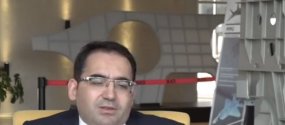
You should at least put up the work and do your research before coming here and blustering about it.
Like, dude, we are sacrificing our time and put up some efford here to inform others about these kind of stuff, you can at least read them before talking out of nowhere.
Last edited:
I tried my best with my paint skills to scale the size of the Flanker with the MMU, @CasualObserver @Philister :
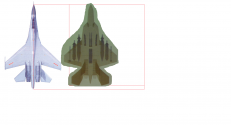
They are both 21m in length and 14m spanwidth. If someone else can compare them visually better than I did, please go ahead by all means.
We can clearly see how large the horizontal stabilizers are on the MMU.

They are both 21m in length and 14m spanwidth. If someone else can compare them visually better than I did, please go ahead by all means.
We can clearly see how large the horizontal stabilizers are on the MMU.

